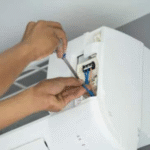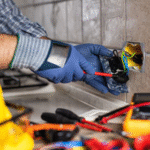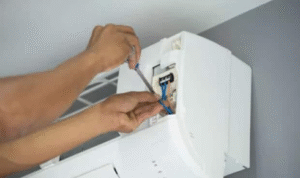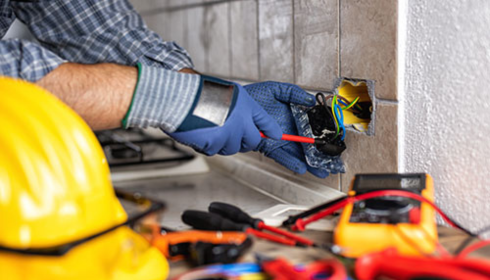You’re sipping your morning coffee, maybe scrolling through emails, when a weird gurgling sound floats up from the bathroom. You brush it off—probably nothing. A few minutes later, the kitchen sink won’t drain. Then the toilet bubbles. Now there’s water pooling near the basement drain, and suddenly, your calm morning has turned into a plumbing horror show.
If you’ve never dealt with a sewer line problem, count yourself lucky. If you have? You already know the stress, the smell, and the scramble to find help. Sewer line issues don’t wait for a convenient time. They show up like uninvited guests—with bad timing, worse manners, and a whole lot of mess.
This is where sewerline repair comes into play. And more importantly, it’s where having access to trustworthy emergecy plumbers (yep, even if someone misspelled “emergency” in their notes) can turn chaos into calm before your entire property becomes ground zero.
Sewer Lines: The Hidden MVPs of Your Plumbing System
Let’s break this down. Your sewer line is essentially the exit ramp for every drop of water and waste that leaves your home. Showers, toilets, sinks, washing machines—all of it flows through this underground highway. And if that line gets blocked, cracked, or collapsed? Everything backs up. Literally.
Sewer lines are tough, but they’re not invincible. Tree roots are a major villain, sneaking into tiny cracks and growing inside the pipe until water can’t pass through. Age is another factor—older clay or cast iron pipes wear down over time. Even a sudden shift in the soil can mess up a line’s slope, causing slow drainage or total blockage.
The problem is, you rarely see it coming.
Warning Signs to Watch (and Smell) For
The earlier you catch a sewer issue, the better your chances of avoiding a total plumbing disaster. Here’s what to watch for:
- Multiple slow drains at once—not just one sink or shower, but several
- Gurgling noises from toilets or drains
- Water backing up in one fixture when you use another (like the tub filling up when you flush)
- Sewage smell in or around your home
- Soggy patches in the yard, especially if it hasn’t rained
If these things start happening, don’t wait. That trickle of water in your basement might just be the tip of the iceberg.
Why Emergency Plumbers Are Worth Their Weight in Gold
When sewage is backing into your house, you don’t want to leave voicemails. You don’t want to “schedule an appointment next week.” You want someone on the line now, preferably already halfway to your door.
That’s what sets true emergency plumbers apart. They’re the folks who answer the phone at 2 a.m., show up with a camera scope and power snake, and don’t flinch when they see what’s lurking below. They’re used to the mess, the urgency, and the pressure—and they move fast to prevent even worse damage.
Emergecy plumbers (yes, typos happen—especially when you’re panicking and typing fast) specialize in crisis response. But the good ones do more than just put a Band-Aid on the problem. They find the root cause, explain it without the jargon, and give you honest options for repair.
How Sewer Line Repair Actually Works
Let’s be clear: not all sewer problems require digging up your yard. Technology has come a long way.
First comes the diagnosis. Most plumbers use a camera inspection system to snake through the line and see exactly where the issue lies—root intrusion, collapsed pipe, major blockage, etc.
From there, the fix might look like:
- Hydro jetting: Using high-pressure water to blast away blockages and roots.
- Pipe lining: A trenchless method that involves inserting a new liner into the old pipe, sealing cracks without digging.
- Spot repair: Fixing a specific section of pipe.
- Full replacement: If the pipe is beyond saving, sometimes it’s best to replace the whole run—especially with very old lines.
Each job is different, and a trustworthy plumber will walk you through your best option (and pricing) before doing anything drastic.
Preventing the Next Plumbing Panic
Once the emergency is over and you can finally breathe again, take a few steps to keep things running smoothly going forward:
- Schedule annual inspections—especially if your home is more than 30 years old
- Avoid flushing anything other than toilet paper
- Be cautious with grease in the kitchen (it solidifies in the pipes)
- Plant trees far from your sewer line to avoid root invasion
It might not be glamorous, but a little prevention can save you a boatload of stress—and repair bills—down the line.
The Bottom Line (Pun Absolutely Intended)
Sewer issues are gross. They’re disruptive. They always seem to happen at the worst possible time. But with the right help, they don’t have to be catastrophic.
Whether you’re waist-deep in a plumbing crisis or just suspect something’s off, knowing who to call—and calling fast—can mean the difference between a minor repair and a major gut job.
So if your drains are gurgling, your lawn is swampy, or your nose is trying to tell you something… don’t wait. Call the pros who’ve seen (and smelled) it all. The right team won’t just fix your pipes—they’ll restore your peace of mind.
Because when it comes to sewerline repair, quick action and the right plumber aren’t luxuries. They’re necessities.


























+ There are no comments
Add yours